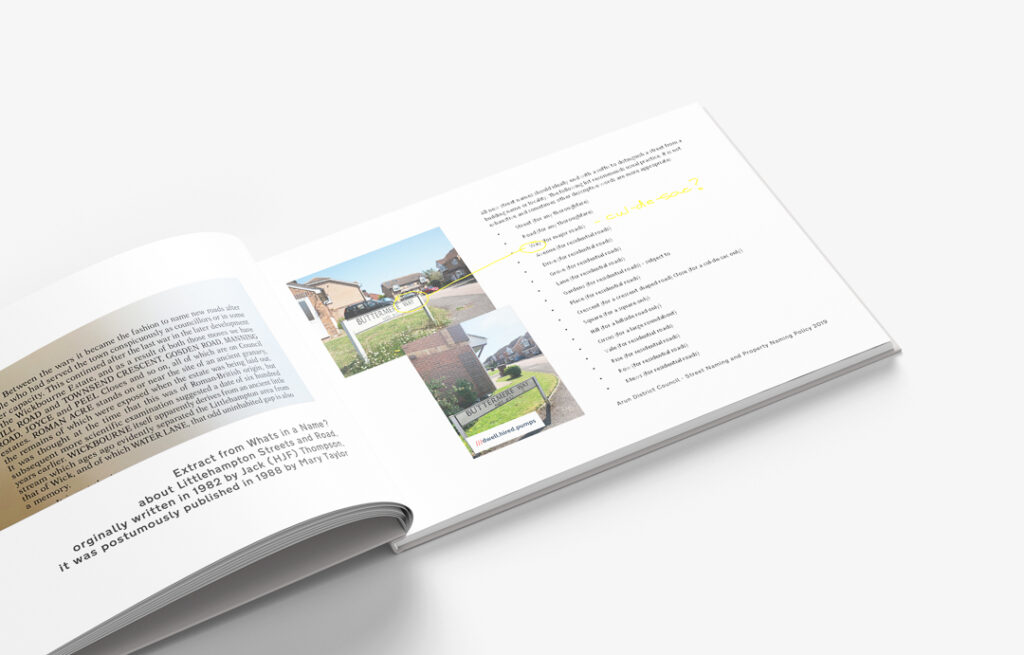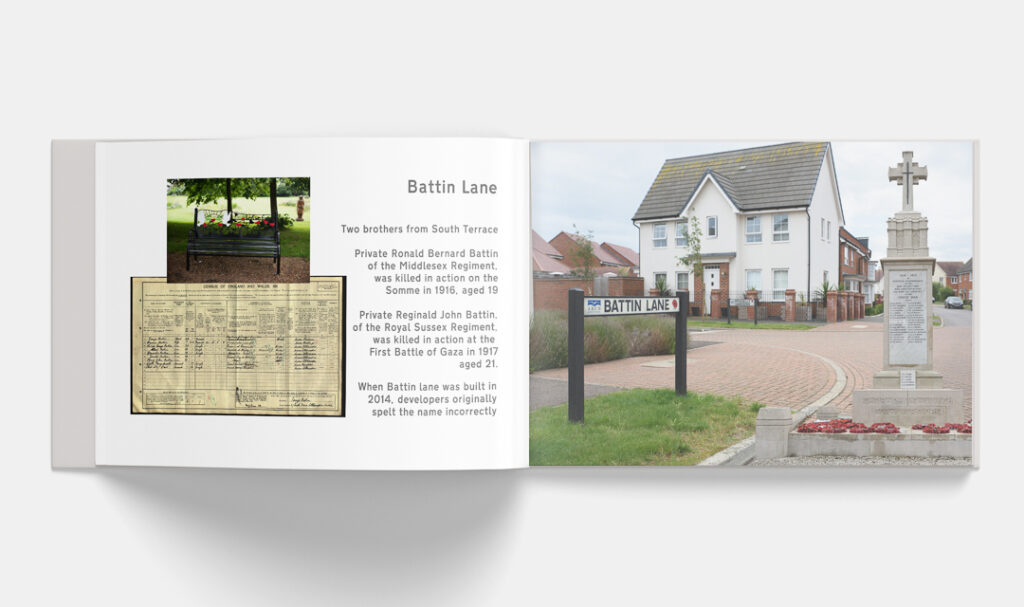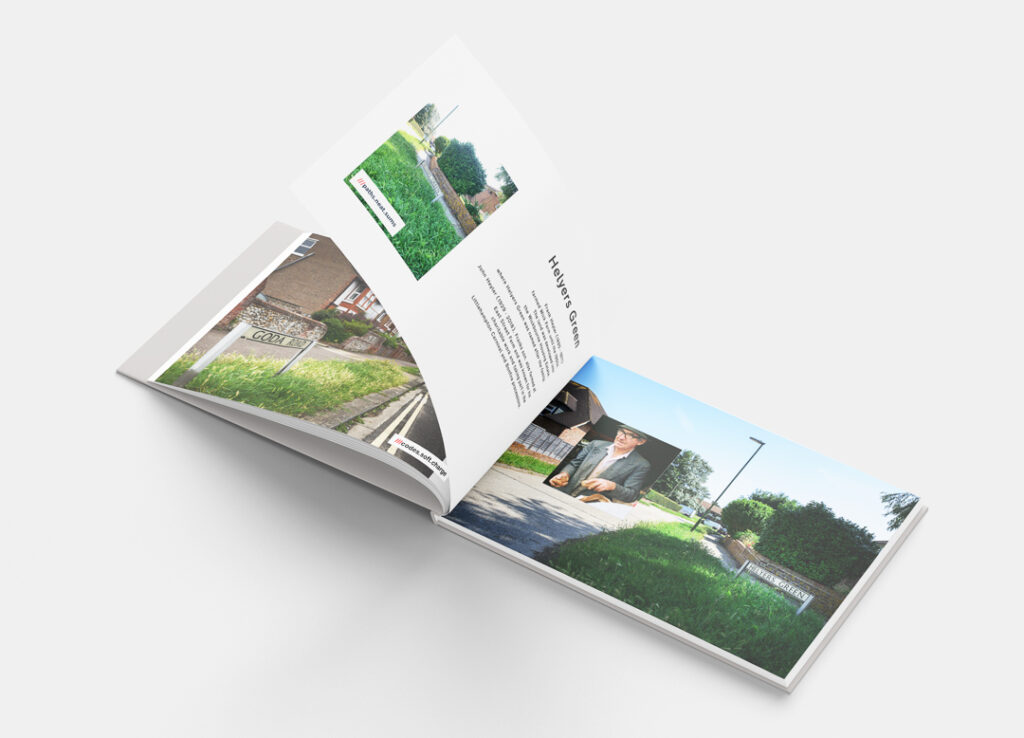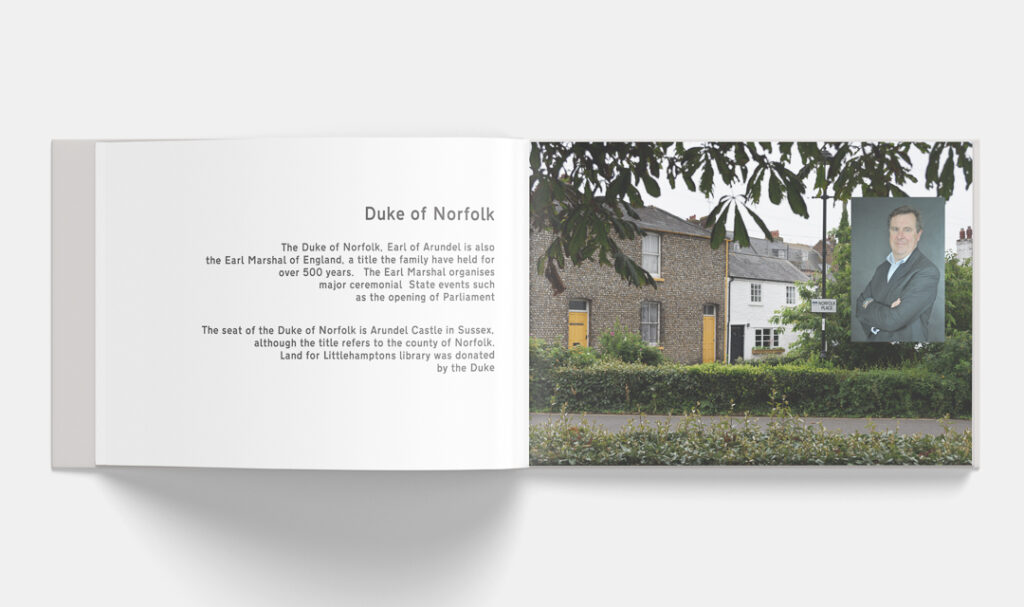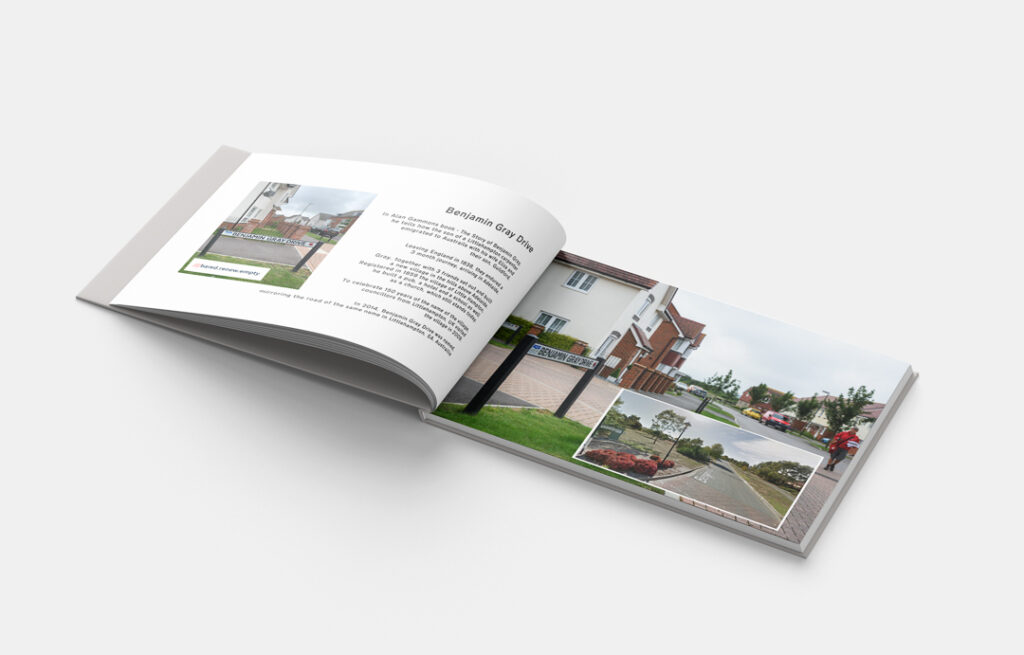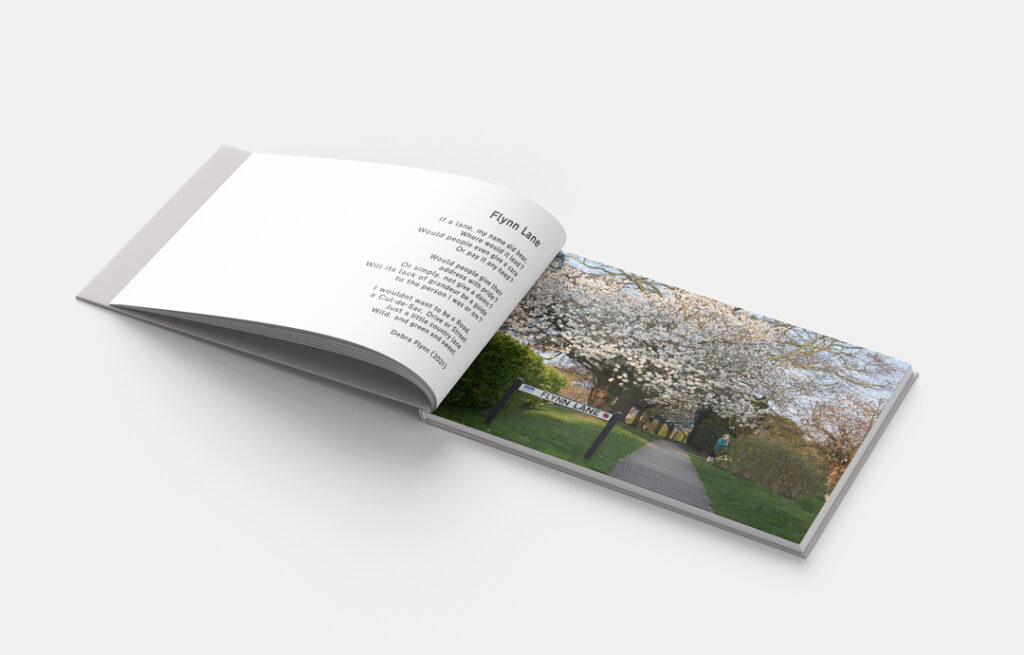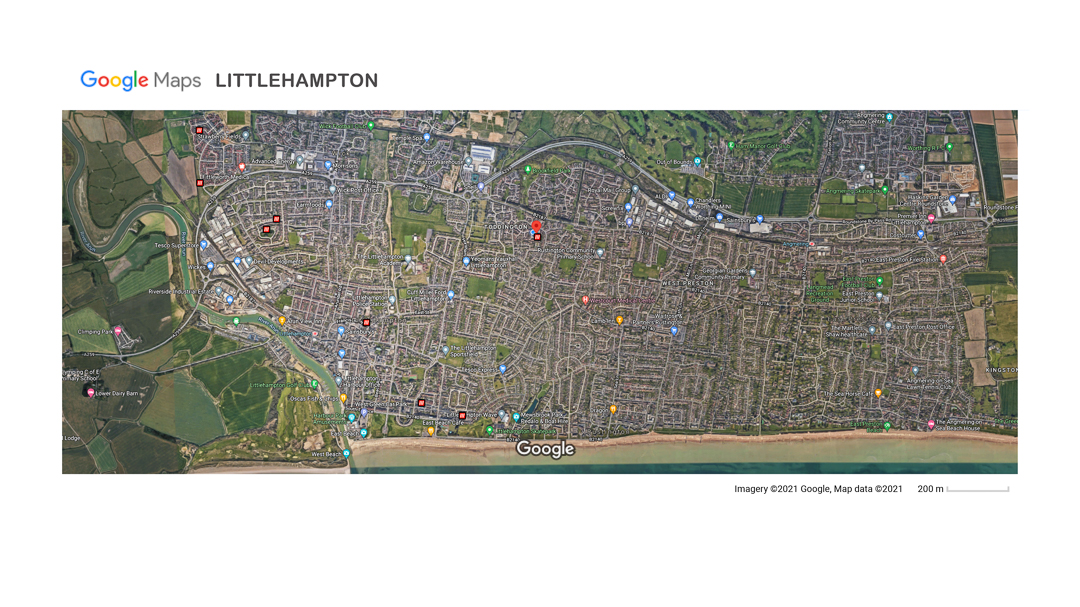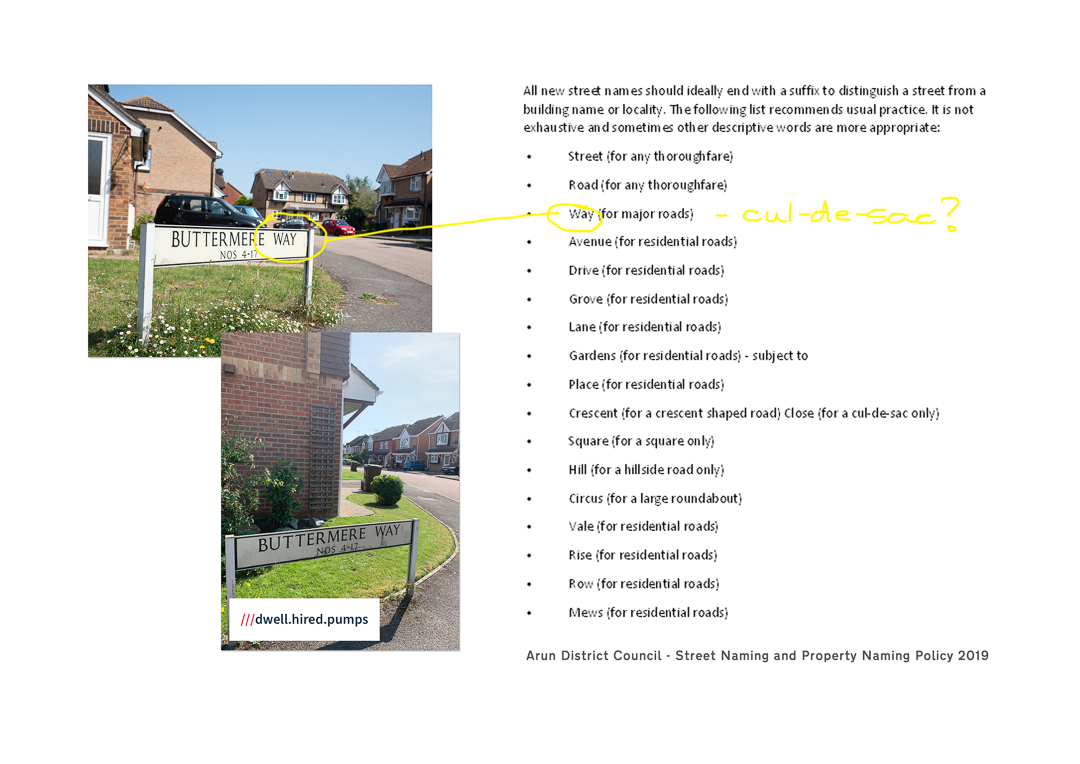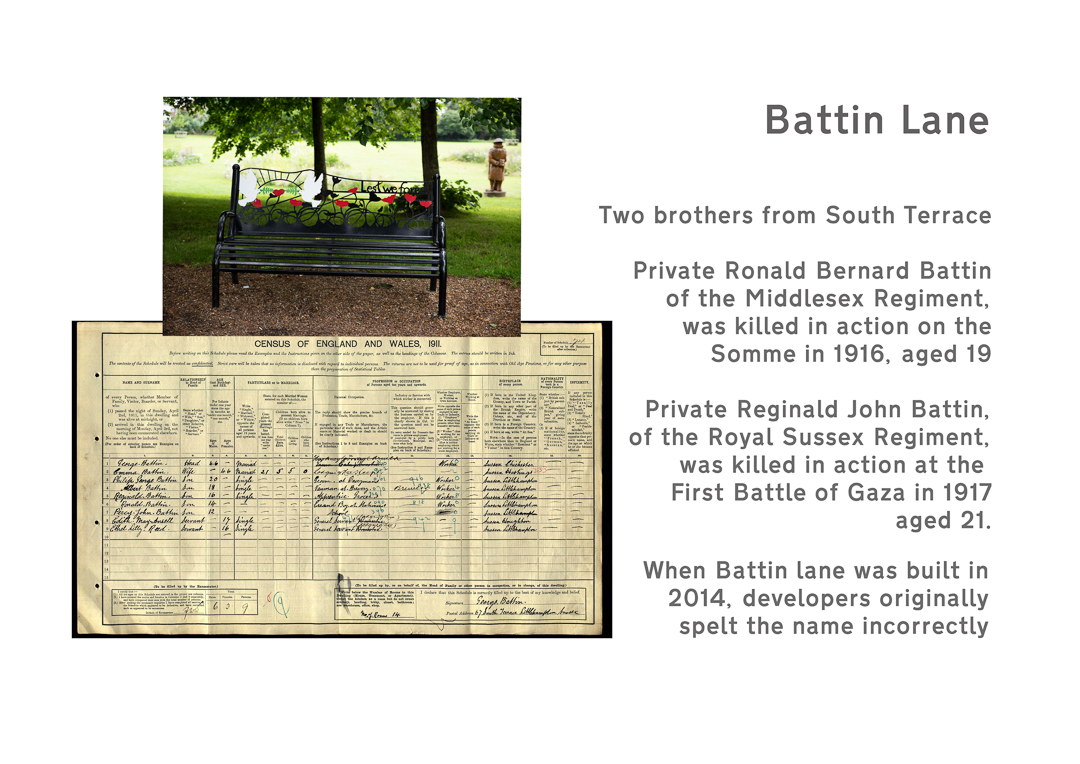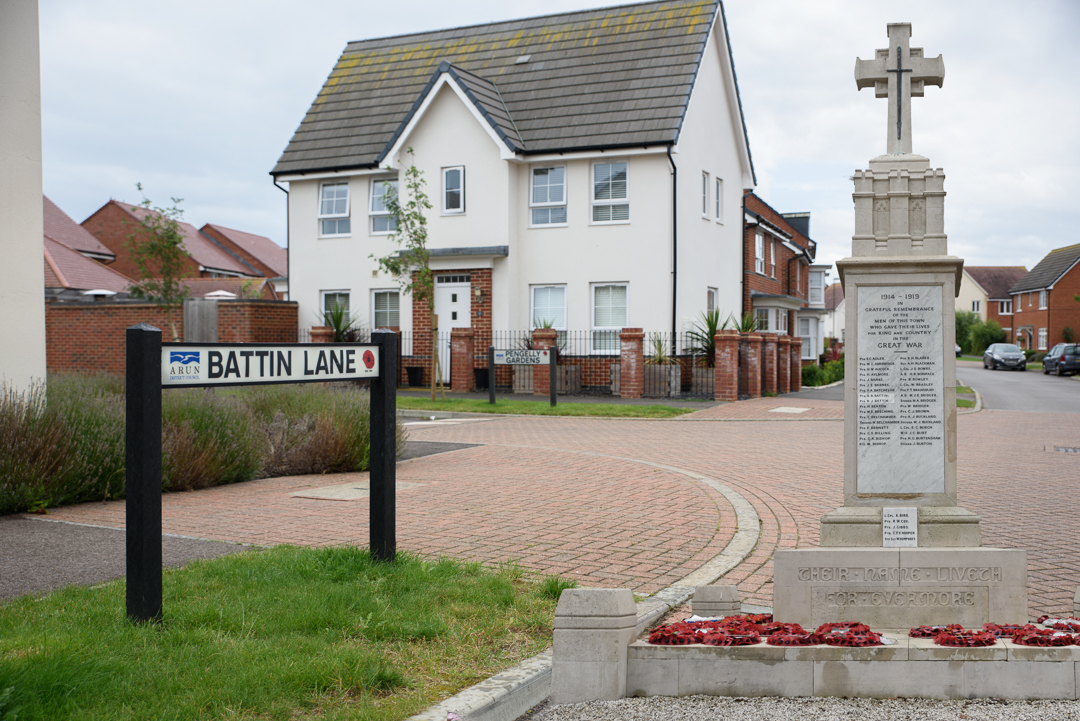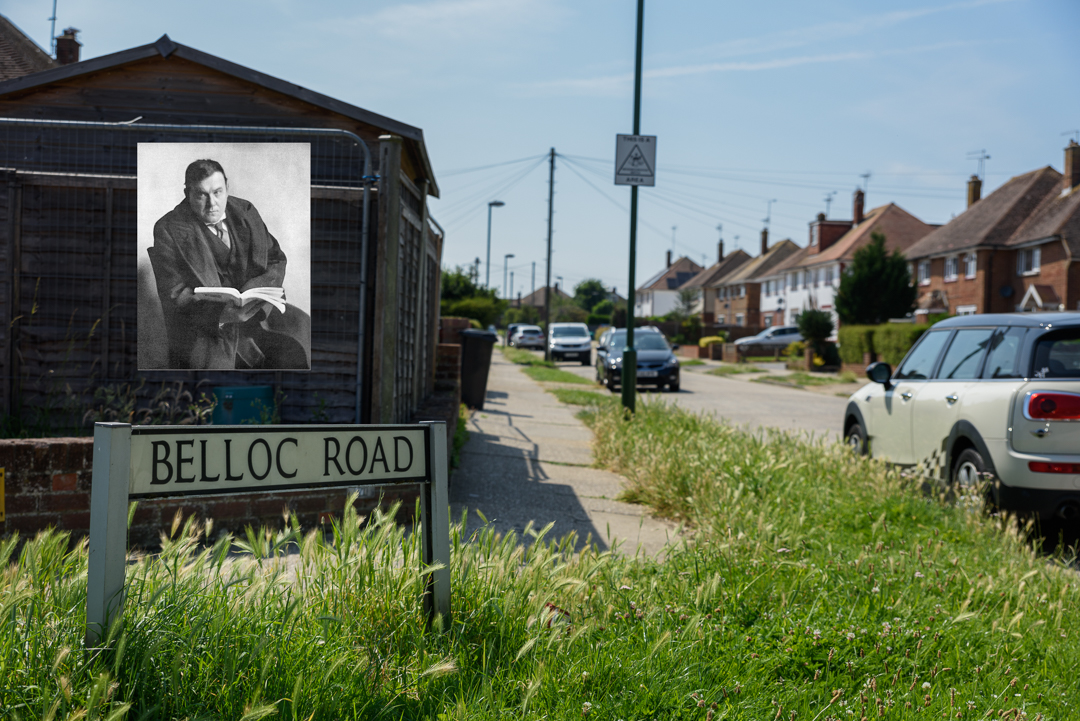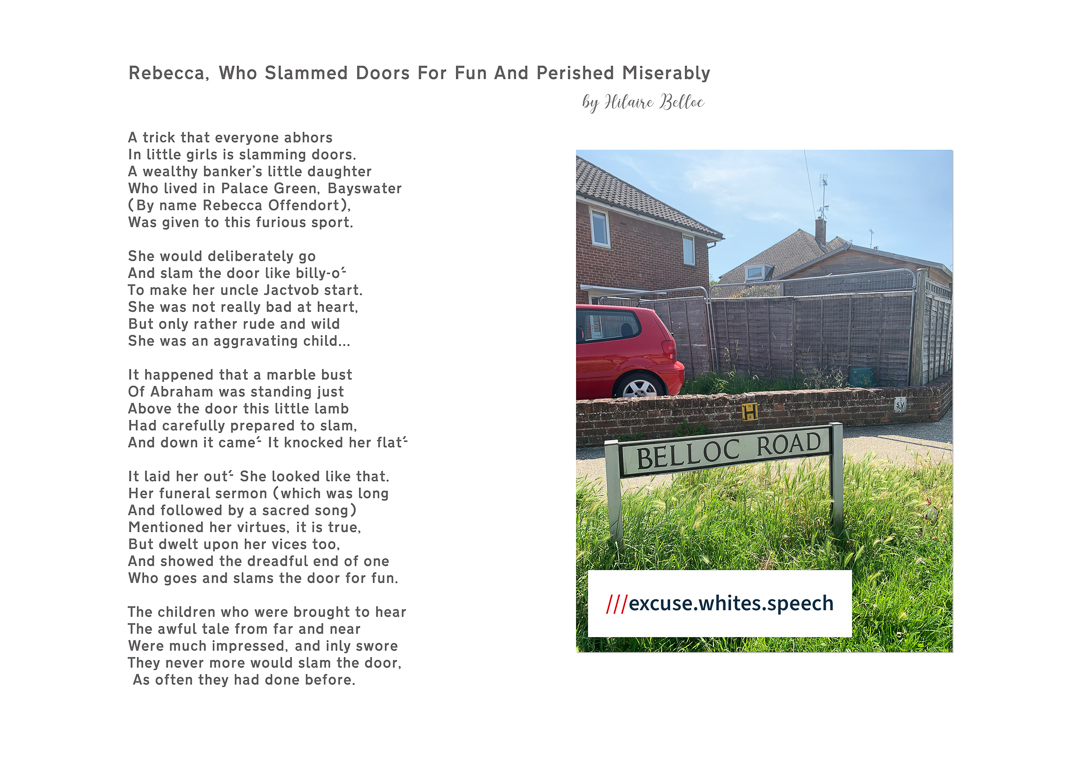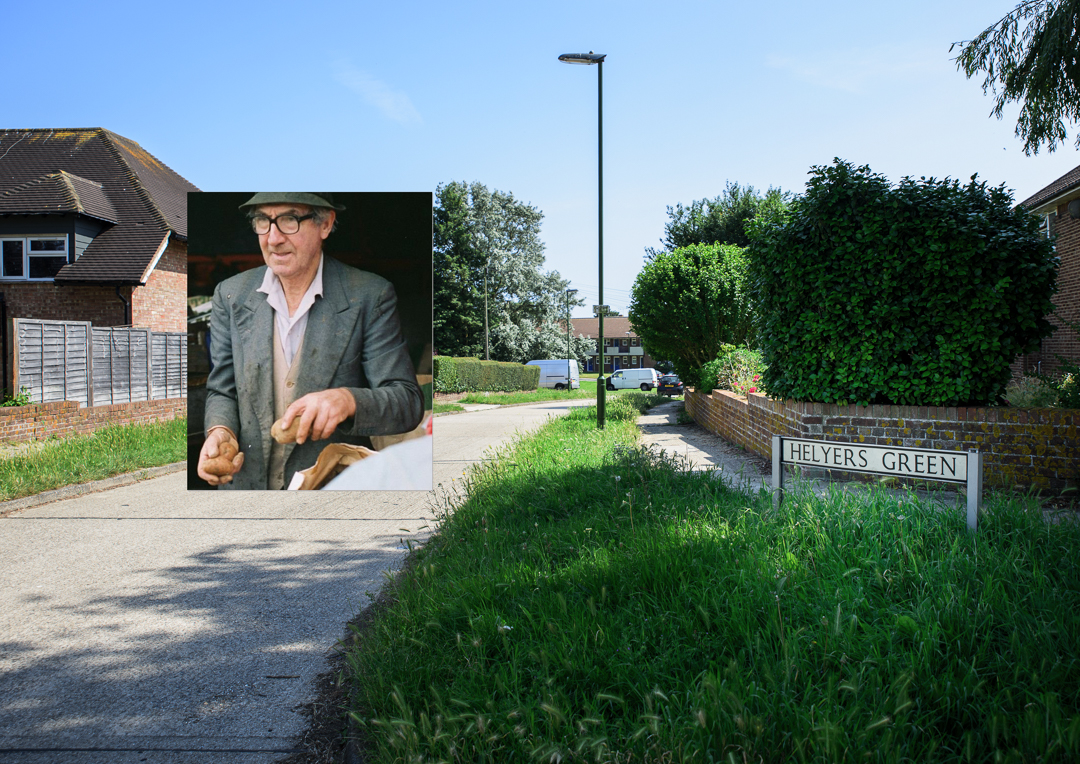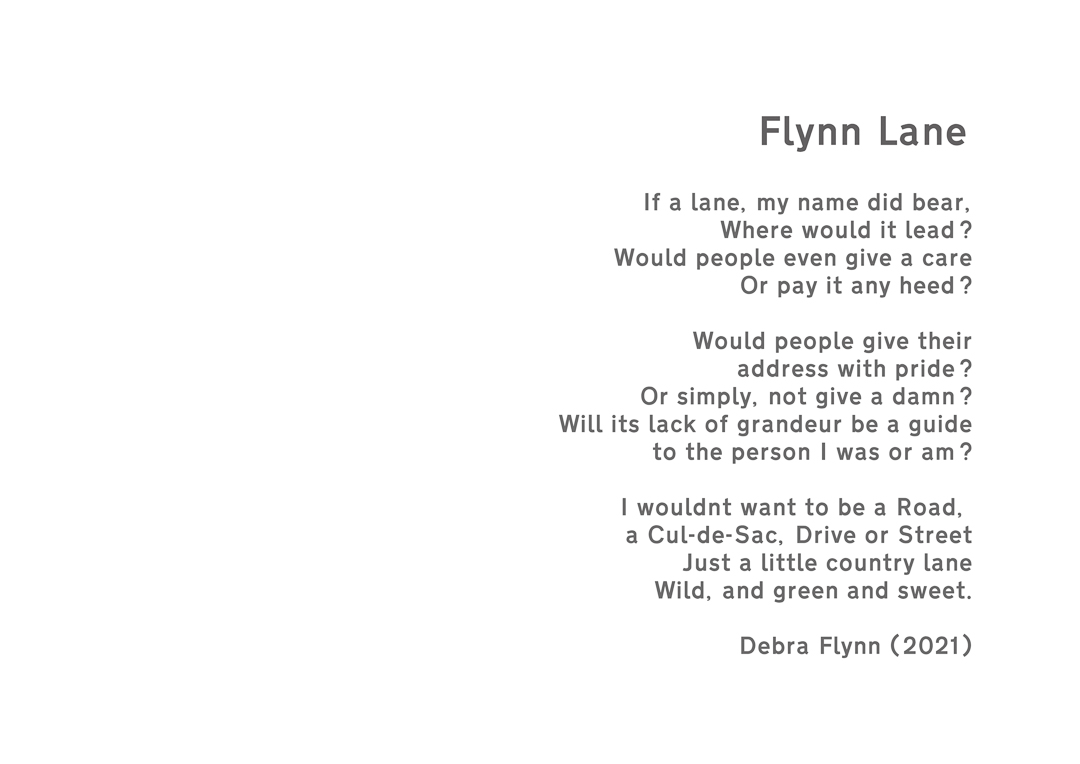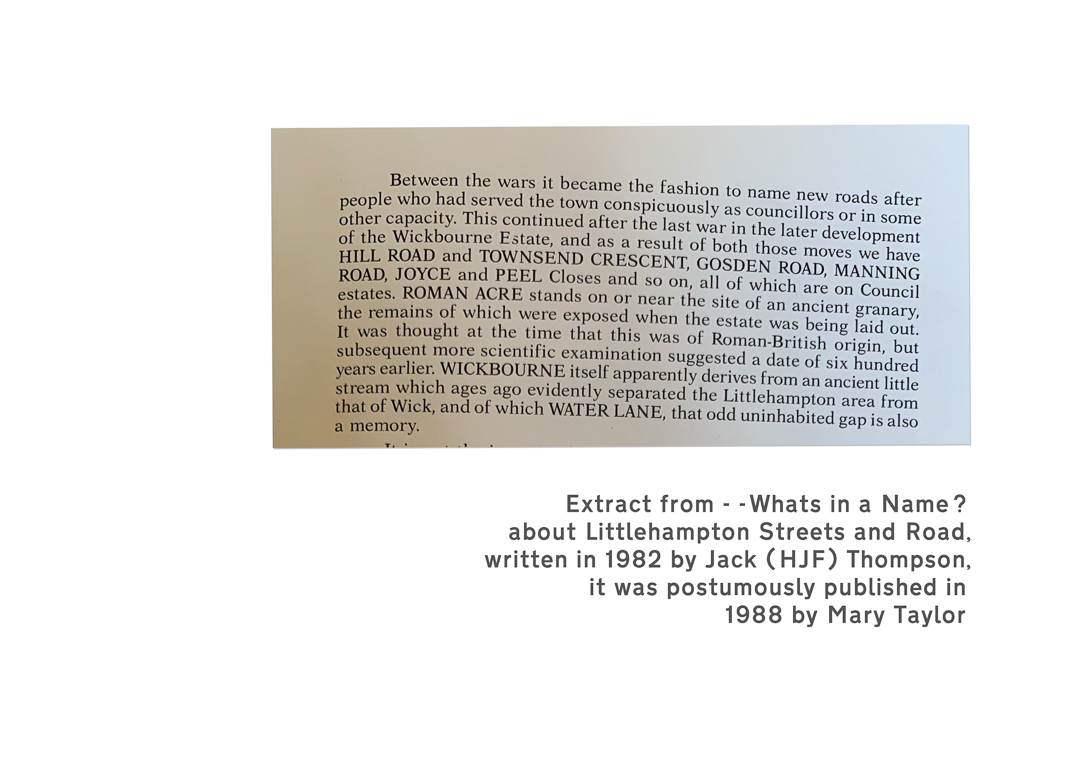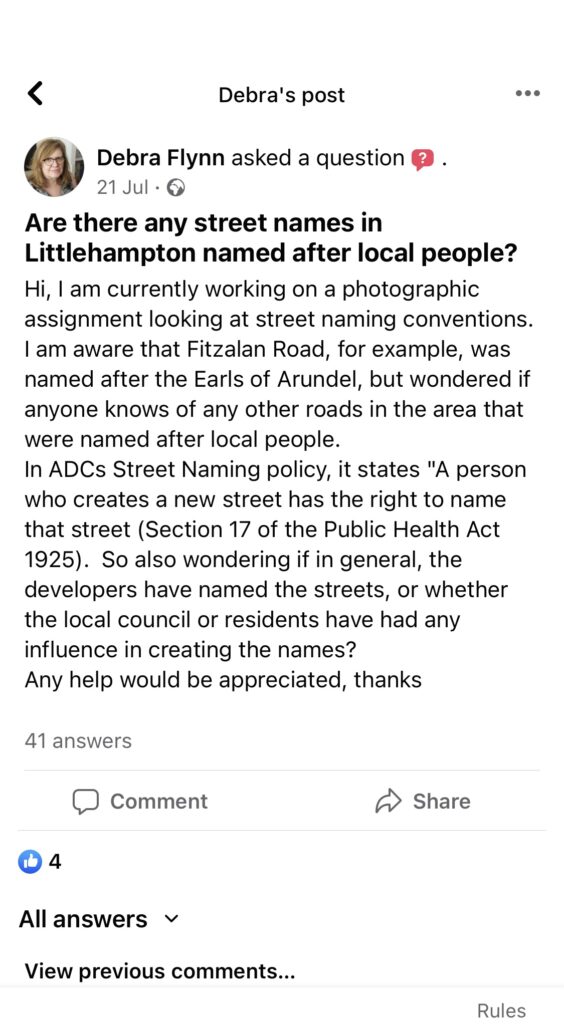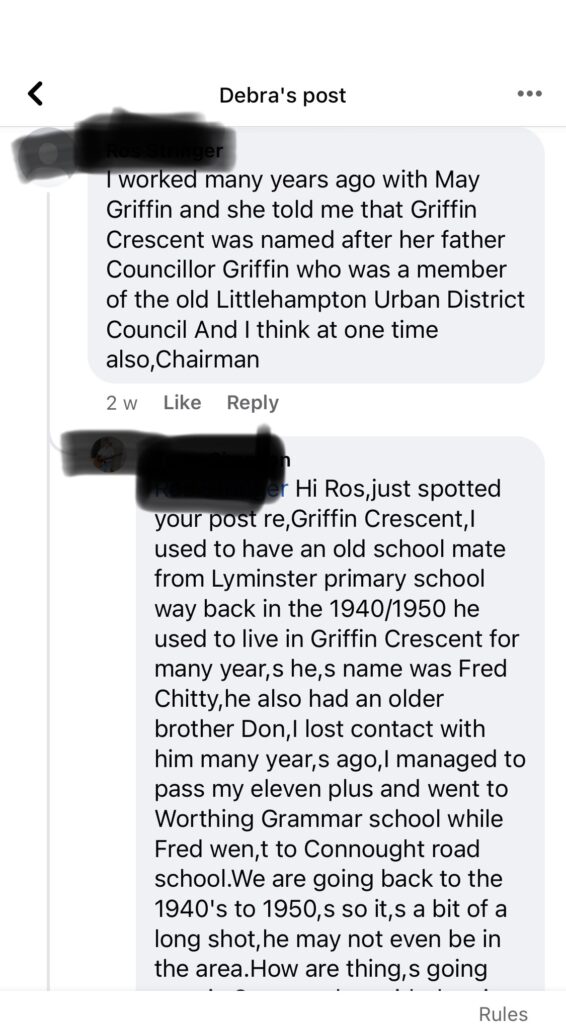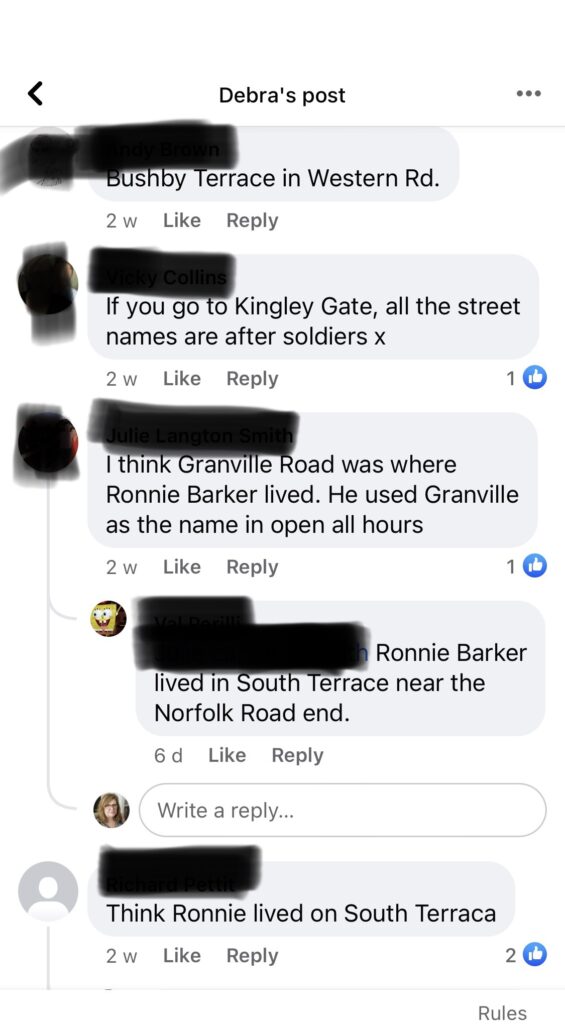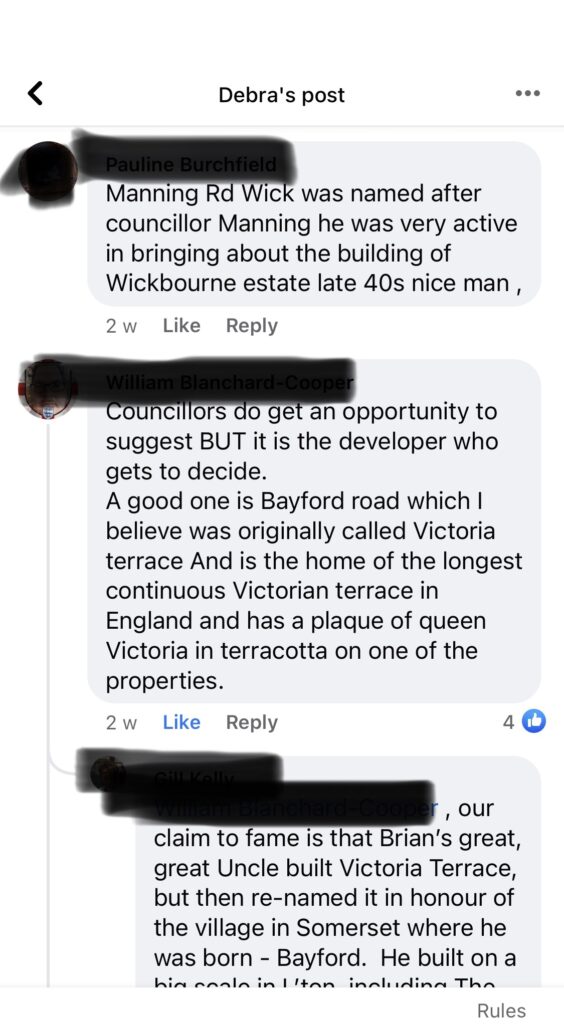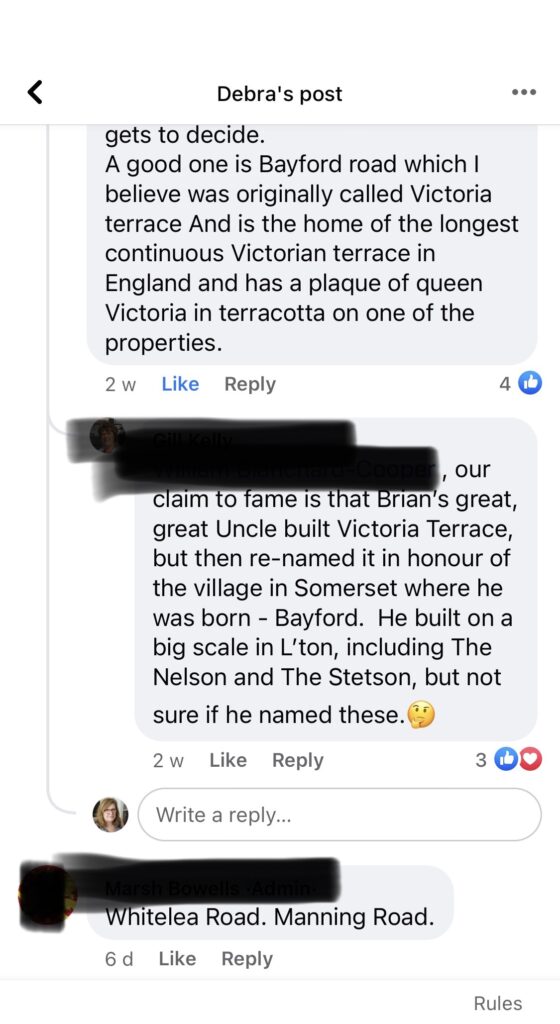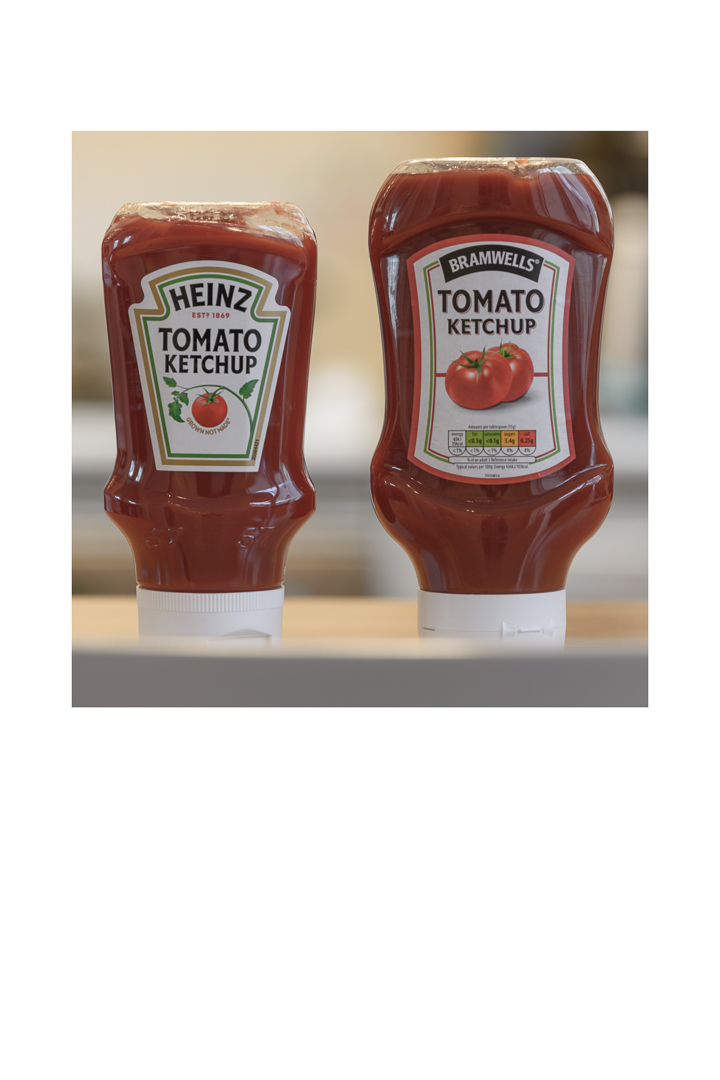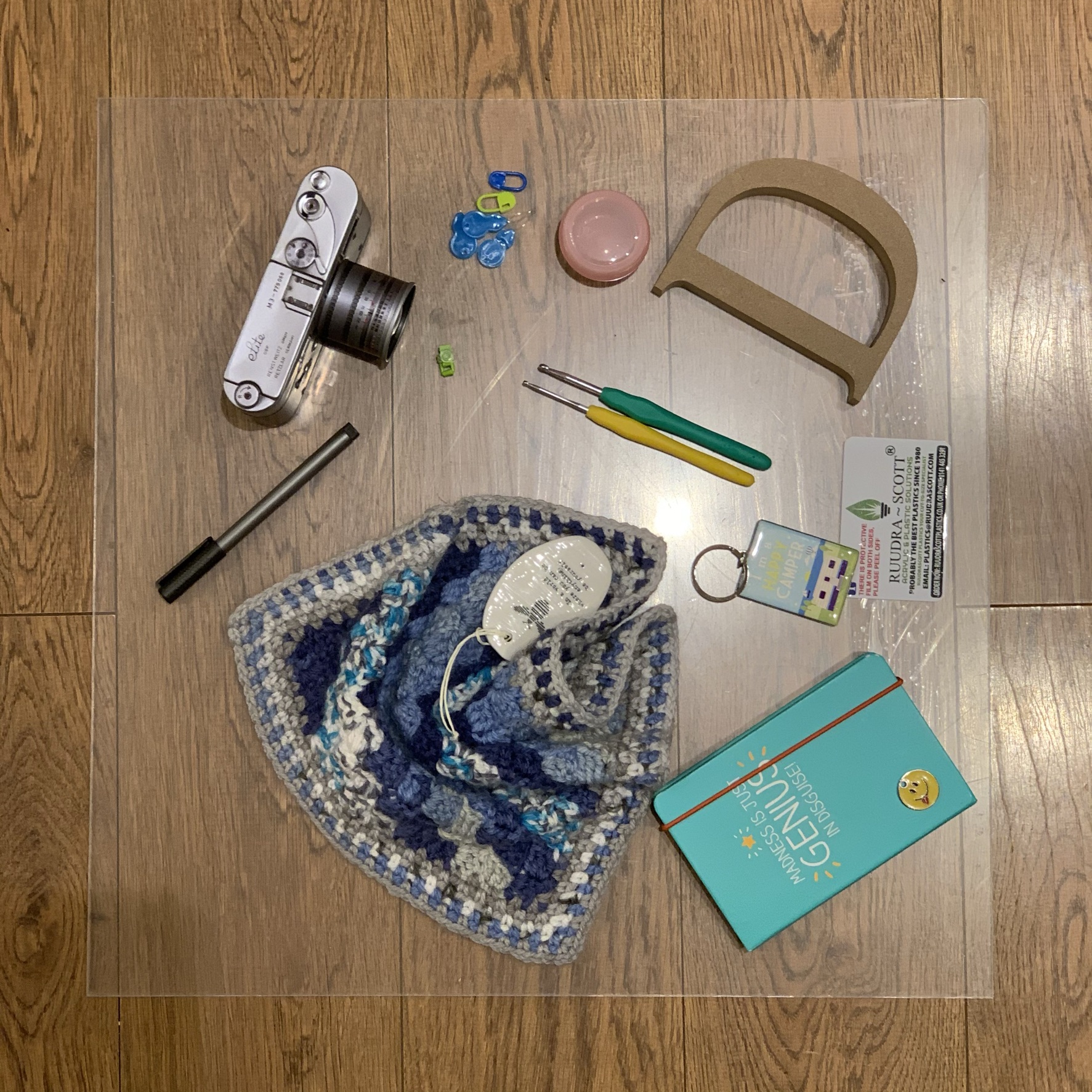Street Naming Conventions
Artist’s Statement
When I first considered this brief, I really wanted to do something with still life and personless landscapes studied in Part 5. I explored that using a piece of perspex and some of my own personal items, with a view to placing it in a place and taking an image which I would couple with an observation of what I could see from that place as Perec had done in his ‘An attempt at Exhausting a Place in Paris’. Although I explored that I found it difficult to work out how to make a coherent set. This is detailed in my A4 Ideas post.
My tutor suggested that I try to redefine Assignment 4 in which I had explored the name ‘Debbie Reynolds’. He suggested that I had a few different themes going on and that it would be good to identify those and pick one that resonated with me to explore further.
What stood out for me was the way names can really impact your identity and yet people don’t really choose to change them once they have been given them. In terms of my own name I didn’t feel there was much further I could explore, so I thought about how most people’s name is chosen for them, and if they had a choice what would they call themselves? Again an interesting idea but I felt would need a long time to develop and pull this together, something that I don’t have when I need to complete an assignment for a given date. I did want to note this however because I would like to go back to that idea. I also attended a virtual talk by Andrea Norrington who said it was important for tutors and assessors to understand your thought process in answering the brief.
The concept of the street names was really born out of the ‘What3Words’ app. In years gone by, your address was the main route by which other people knew where to find you, and sending letters was the main form of communication. In today’s world of GPS, mobile phones and email, maybe addresses are less important. Other than for your Amazon deliveries of course!! However, even that could be done away with if you gave the geotag to the delivery company in which your front door is situated. Maybe people could find you wherever you are, e.g. at work or whilst out for lunch. I wondered therefore if the name of your street was part of your identity. What if the name of your street was a person’s name? What connotations would that bring? does it impact the identity of the street? Would the person named be glad to be linked with this particular street? All questions I have attempted to answer with this series.

Does your environment impact your identity and your identity impact your environment?
Littlehampton, on the south coast of England, was mentioned as a village in the Domesday Book and has grown since then into a seaside town of about 30,000 people. There have been a number of waves of building that have happened, from Victorian Terraces and Georgian Squares to 1930s council houses and new housing estates. The nature of how the architecture sits in relationship to each other is another area of interest which I partly explored in Context and Narrative Assignment 1,
Starting with an overview of the town and an extract from the Arun District Council Street Naming Policy, the series is presented as a book and consists of a double-page collage incorporating a current image of the street and found images or words that tell us something about the person the street is named after. I have also added an image taken with the What3Words app, giving the geotag location. In affect a second identity for the place I stood. These peopleless scenes, are linked to the traces of humanity by choosing streets named after individuals but allow the viewer to roam around freely within the scene by using geotag could go and stand in the very same place I have.
In researching the streets, I used a variety of books from the library, online ancestry records, found images and guidance from local people via a Facebook post. Research for this assignment is detailed in the Research and Planning section below. I noted that the naming of streets after local people seems to be something that has been in and out of fashion. Many of the estates within the town have no streets named after people, so they are not represented within this set.
To complete this series I have used new original images, found images, maps of the local area, and text to add context or insight about the person named. I have also referenced each of the images to the ‘What3Words’ App which has divided the whole world into 3 meter squares and assigned three random words to each. This is particularly interesting in the Benjamin Grey Drive image. The final image (Flynn Lane) is completely constructed as I explore what kind of street I would want to be named after me.
Arsen and Schindelmanns used geotags found in Twitter tweets to find the place from which the tweet was made. They travelled to the place and used the words from the tweet together with an image of the location to construct a story. In this series, I have constructed a story from facts I have found about the person, visited the street and added the geotag found. In essence, giving it a new identity and leaving a trace of my visit which other can replicate.
To further develop this series, it would be interesting to photograph some of the people that live or have lived in these streets and gather their experiences of living there.
“Suburbia is where the developer bulldozes out the trees, then names the streets after them”
Bill Vaughn, american journalist
Individual images
(click on one to scroll through the gallery)
Assignment Approach
The Brief
Look back at the themes we’ve examined relating to place and our presence within it. What areas inspired you most?
The culmination of this course is a self-directed assignment where you have free rein to choose a subject that relates to any of the material discussed in the course. You may have gathered skills and insights through the projects that you
want to revisit or you may have been inspired by other ideas.
The only stipulation is that the final outcome must represent a notion of identity and place that you are personally inspired by. Make sure that your work is visually consistent, relevant to the subject matter you choose and holds together well as a set, both visually and conceptually.
Research and Planning
I approached this project by starting with a map of the town. The first image of the series is a google map of the whole of Littlehampton. I am not a native of this town or even this county so I wasn’t really very aware of the social history. therefore, I needed to draw on the knowledge and work of others.
I found a copy of the Arun District Council Street Naming Policy online and discovered there are a lot of rules about how streets are named. The right to name a street is given to the person or developer who built it. Although the councillors can suggest and advise it is the developers who have the final choice. Like a photographer perhaps that is a mirror to the views of the developers at the time?
A quick look at the street names didn’t really reveal which might be named after people, so I started by asking a question on ‘Flashback – Littlehampton’ group on Facebook.
This led me to visit the local library, where I found a book called “What’s in a Name?”
Written by a local historian it had lots of really interesting information about the names of streets and I was able to identify a few that were named after local paper.
Written in 1984, this of course didn’t cover any of the more modern streets. so guided by the Facebook feedback, I found a digital book via Amazon Kindle called “The Story of Benjamin Gray” by a local councillor and ex mayor of the tow Alan Gammon. I also discovered that a friend’s wife, from the local camera club, has done the ancestry research for the book. This in turn led me to researching a couple of the people, such as the Battin brothers and Frank Heyler, in Ancestry.com for which I already have a subscription.
I used the ‘What3Words’ app to find Benjamin Gray Drive in SA Austrailia and get the geotag for that.
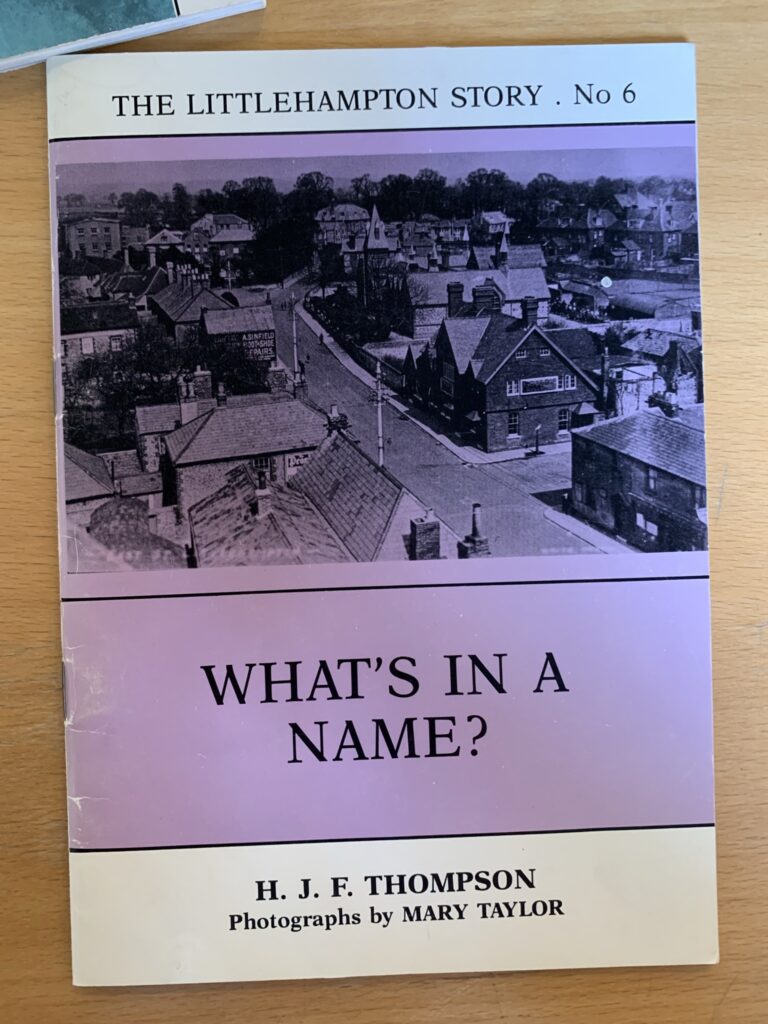
What’s in a Name by HJF Thompson (1988) 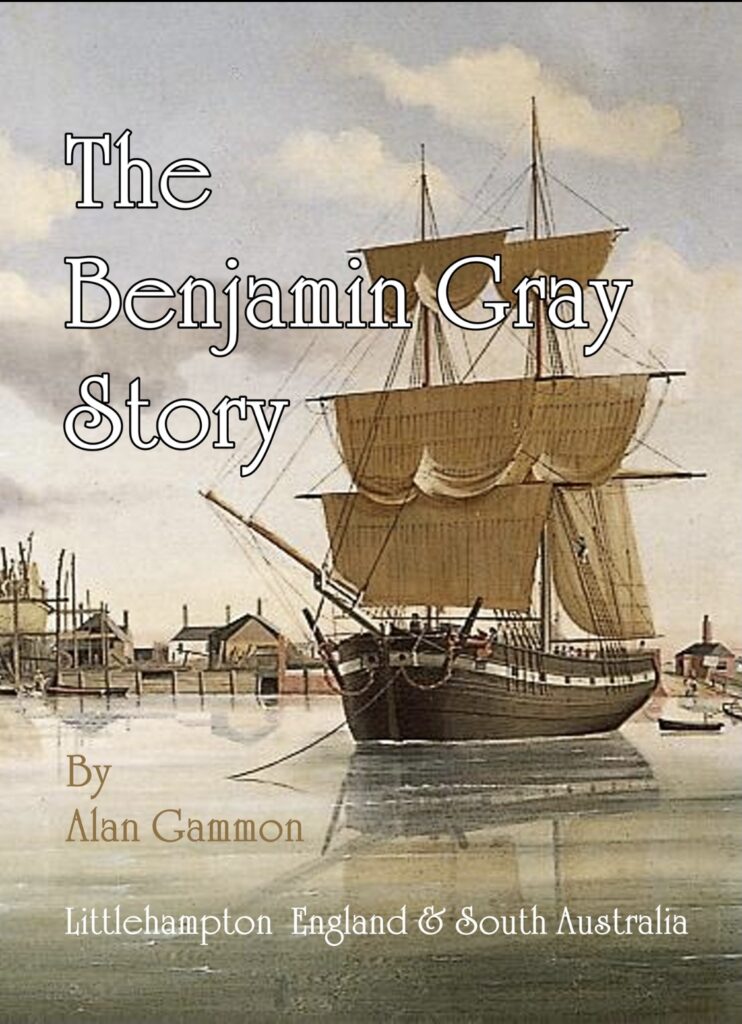
The Story of Benjamin Gray by Alan Gammon (2014)
I found the research fascinating, really interesting and very immersive, for this reason I had to limit myself to a few streets
Technical and Methodology
Technically these images have required a few stages.
- taking the images of the local street using Full Frame DSL camera
- gaining the geotag for each of the places photographed by using the ‘What3Words’ app on my mobile phone.
- creating and dowloading local maps using Google Maps
- use of Adobe Lightoom to edit the images
- use of Photoshop to create the collages using layers and opacity
- use of photoshop to create the text pages
- finding and using comparable fonts
- use of a free downloaded template to create the book
The choice of streets came from the research, but also wanting a range of different eras of building to represent the long history of the town.
Reflection and Learning Outcomes
LO1 – Demonstrate an ability to make technically accomplished photographic work and apply technique purposefully and appropriately.
In this series, I have demonstrated that I am able to use both the camera and post-production to create a cohesive series of images. I have taken both original images taken in different formats and incorporated found images to create collages that are visually consistent and yet allow for variation to further the individual stories. I also used a free downloadable photoshop file in order to create the book which I felt was important to the finished presentation.
LO2 – Be able to translate ideas into visual outcomes with confidence and autonomy.
The idea for this series evolved from a series of influences throughout the Identity and Place coursework. I feel that I can confidently translate my ideas into a plan and execute that plan to fruition. Following feedback from my tutor, following my Assignment 4 submission; I have learned to simplify my theme to a single focus. For example; in this series, I concentrated on streets named after individuals. Often once the ideas start flowing they can keep going and expanding and I have found testing some ideas and writing about them has helped me hone into a more coherent outcome.
I feel there is scope for development of this project which Course timescales don’t allow for, but it is something I could continue to expand on. There a couple ways I could expand it, 1 – include residents of these streets and their reflections of what it is like to live there and 2 – research further streets and add them to the series.
LO3 – Show a developed critical understanding of contemporary practice in relation to historical practice and theory, and the themes explored in this unit.
I think this assignment really encompasses all of the practice, theory, and themes explored throughout the unit and the course. I have explored peopleless landscapes which allows the viewer to put themselves in the street, but, as with still life exercise in Part 5, they show traces of life. I have used both imagery and text influenced by Jim Goldberg’s ‘raised by wolves’ series and rather than using the text to describe the scene, I have added text that will add to the knowledge of the viewer, without explicitly stating the link. This gives the viewer some latitude to bring their own views to their understanding of the images.
Equally, I have rejected some ideas for this work, shown in the ideas and trials I undertook, which demonstrates my increasing ability to be more focused in my approach.
LO4 – Be able to reflect upon your own work and that of others with increasing confidence and criticality.
Not only being able to reflect on my work, but to welcome the feedback of others has been a great learning point for me during this course. My tutor’s constructive criticism has been very valid and I have come to welcome it. Discussion and sometimes debates about a point really help to solidify your own thoughts and whether you agree or disagree with them others point of view, being able to argue you point and still feel that you have achieved what you wanted gives you the confidence to present your work more fully.
I have also started participating in some student led discussions which have been incrediably helpful. It has felt like a safe place to discuss ideas and challenges with people who are going through the same struggles as you are.
Finally, I am so pleased that I am able to end this course with an assignment that has allowed me to get out of the house. Having worked at home since March 2020, it has been a very welcome escape.
Related Posts
Updated Assignment
Following feedback and a conversation with my tutor. (see feedback here) I have amended a couple of the images. Originally I presented the image of Benjamin Gray Drive upside down to represent the town in Australia, but instead I have now added an image of the actual street in Australia found on Google Maps. I do think this gives a better connection. The second image I revamped was the Norfolk Place image. My tutor found that the images which featured portraits of the named people were the strongest, so although this street was originally named after one of the original dukes of Norfolk it felt appropriate to add an image of the current Duke. To further enhance the set, I could add some images of objects, but haven’t had time to do this yet.
Assignment Contact Sheets
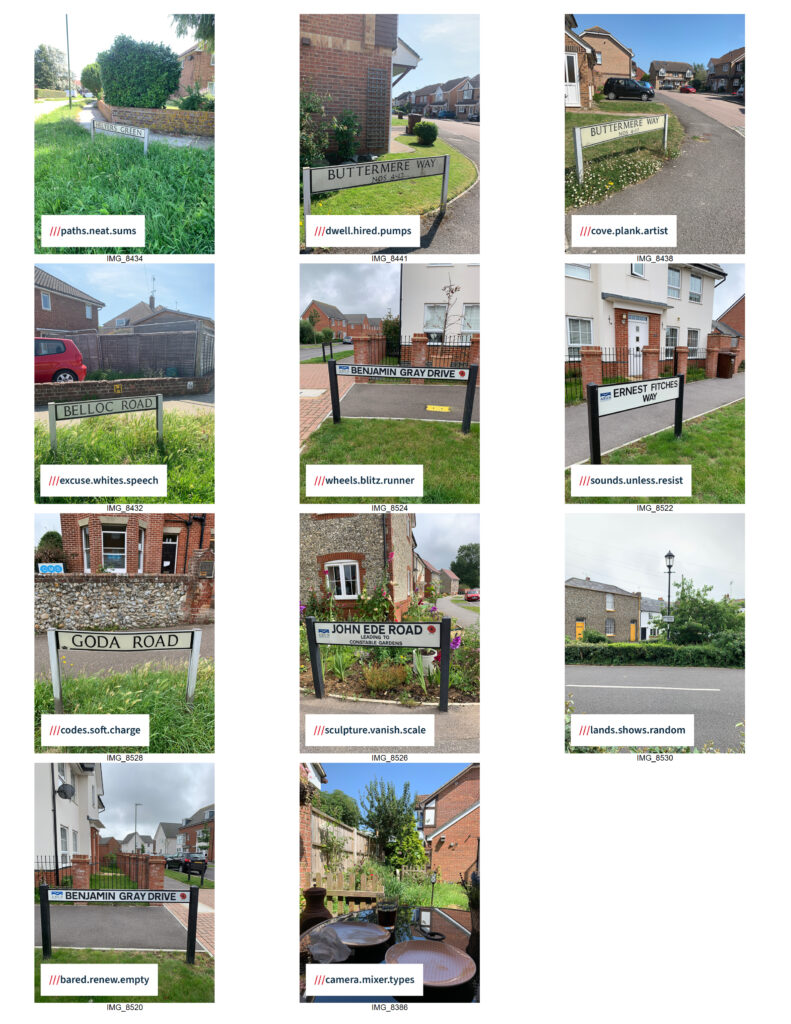
Geotag images taken with ‘What3Words’ app 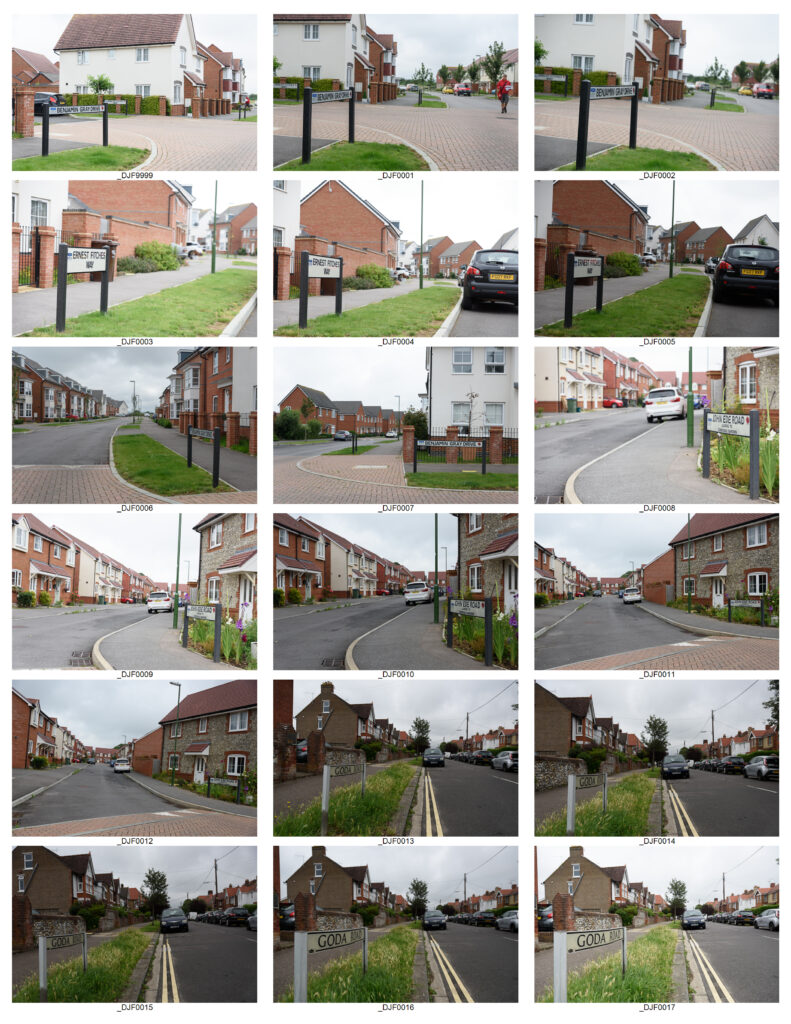
Street signs taken with Nikon D810 & 24-70 mm lens 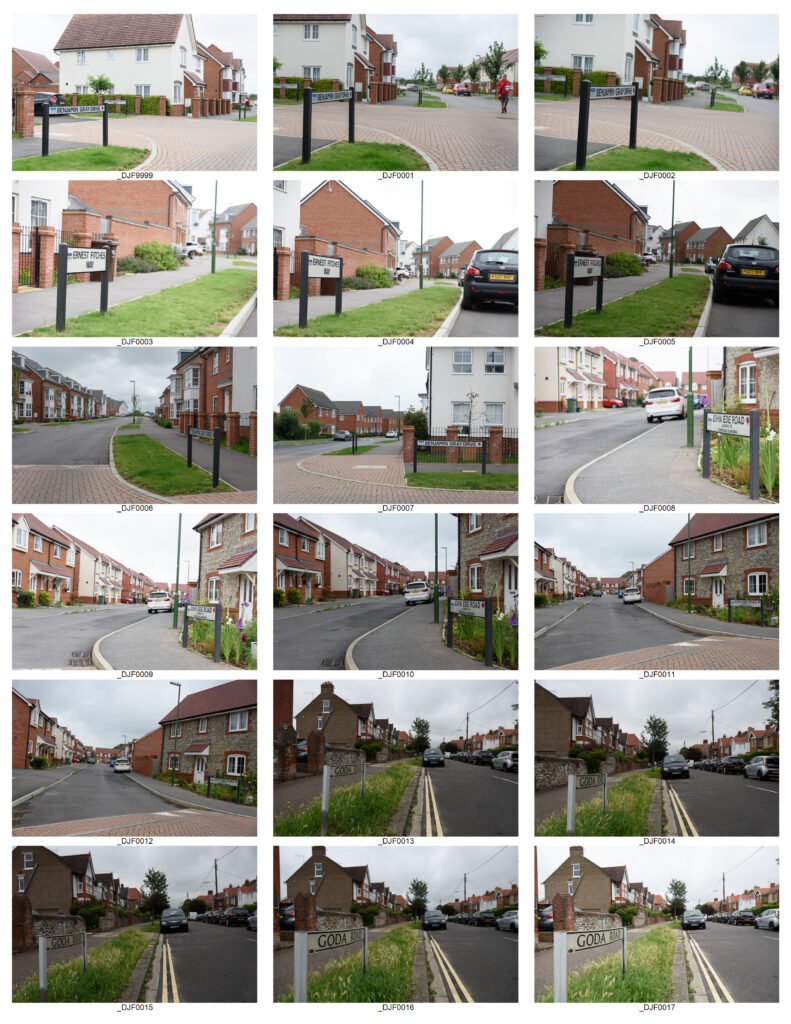
Street signs taken with Nikon D810 & 24-70 mm lens 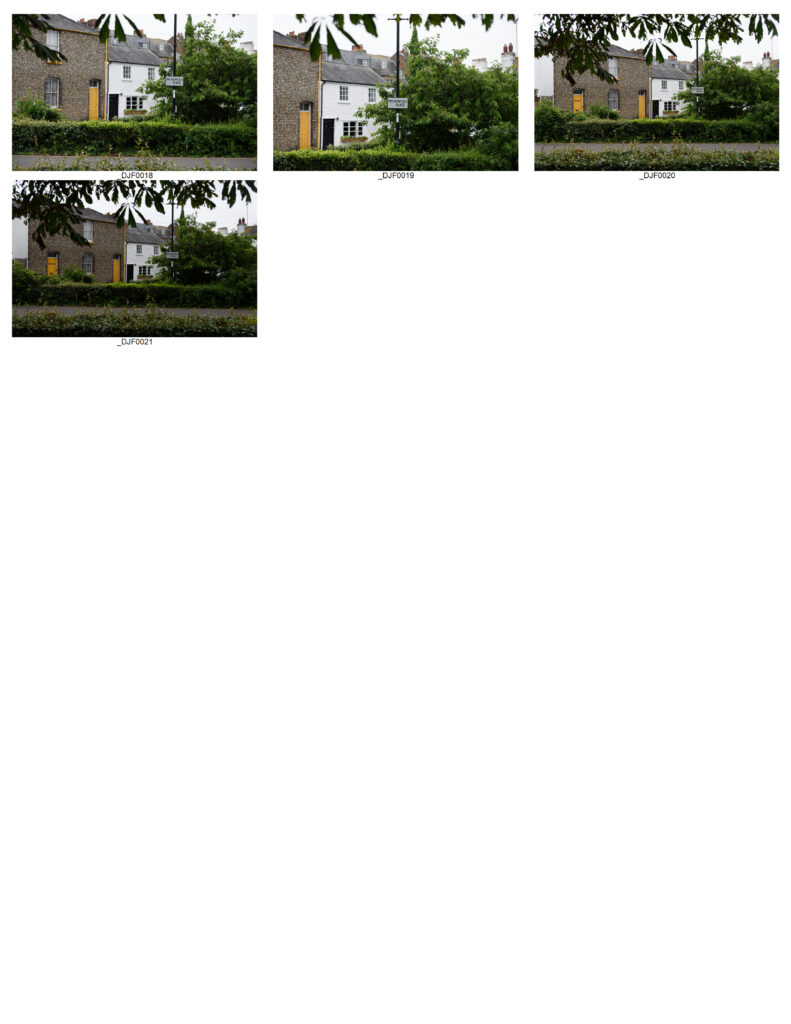
Street signs taken with Nikon D810 & 24-70 mm lens 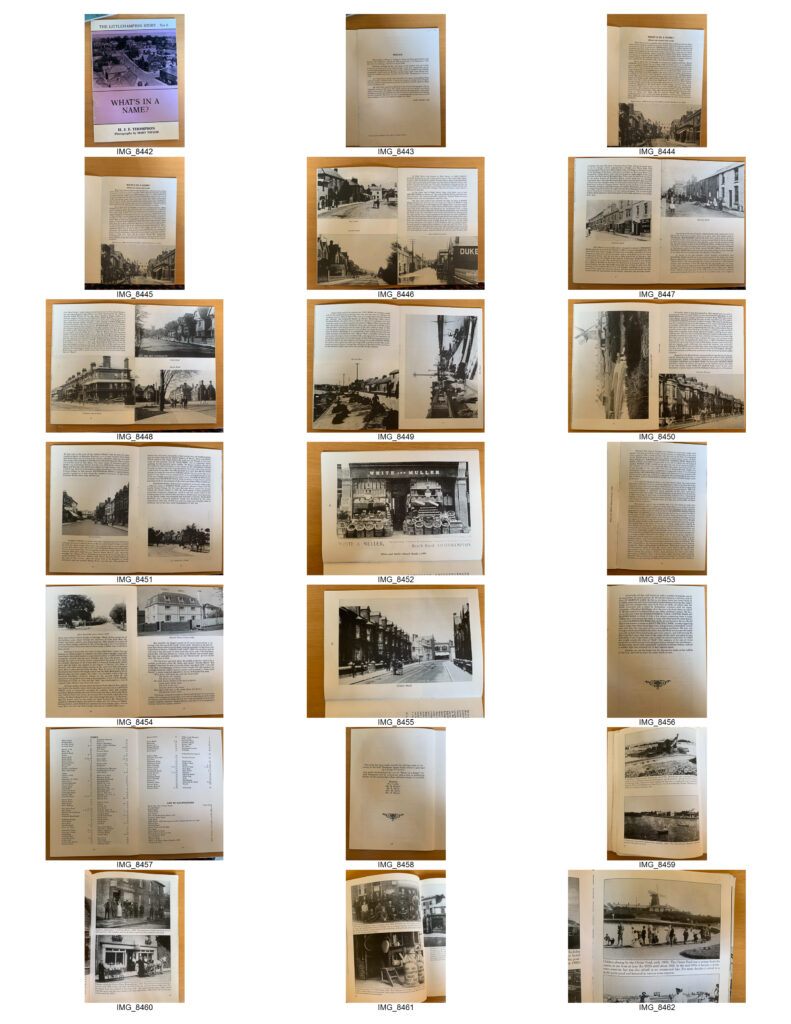
reference pages from ‘What’s in a Name’ by HJ Thompson 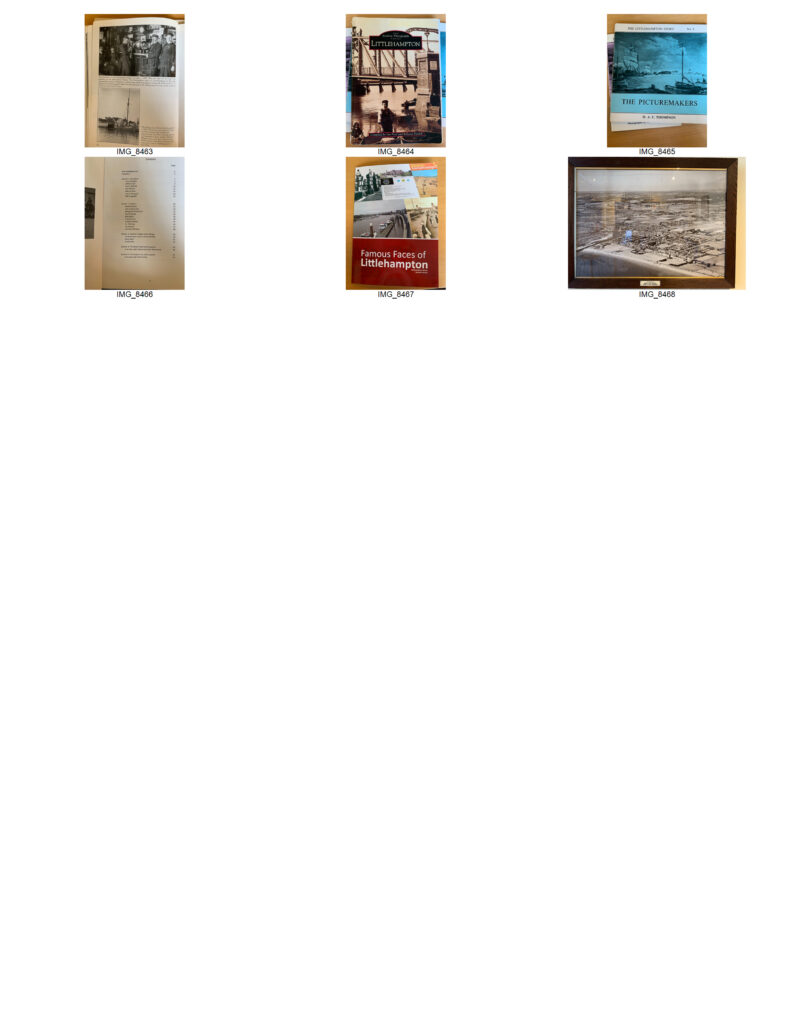
References
Belloc, Hilaire. “The Hilaire Belloc Blog – the Official Blog of the Hilaire Belloc Society. : The Walk!” The Hilaire Belloc Blog – the Official Blog of the Hilaire Belloc Society., 11 Aug. 2012, thehilairebellocblog.blogspot.com/2012/08/the-walk.html. Accessed 21 July 2021.
Council, Arun District. “Street Naming & Numbering.” Arun District Council, www.arun.gov.uk/street-naming-numbering/. Accessed 21 July 2021.
“Court Results: This Is the Latest HM Courts Service List for Sentencing, from June 21 to July 10, 2021.” Www.worthingherald.co.uk, www.worthingherald.co.uk/news/crime/court-results-this-is-who-was-sentenced-at-worthing-and-crawley-magistrates-courts-june-21-to-july-10-2021-3310962. Accessed 23 July 2021.
“Farmer Who Had ‘Wonderful Life’ Passes Away.” Littlehamptongazette.co.uk, 21 May 2018, www.littlehamptongazette.co.uk/news/farmer-who-had-wonderful-life-passes-away-2053020. Accessed July 2021.
“Frank Helyer Died: 6 Apr 1971 BillionGraves Record.” BillionGraves, billiongraves.com/grave/Frank-Helyer/21689313. Accessed 21 July 2021.
“Frank Helyer Died: 6 Apr 1971 BillionGraves Record.” BillionGraves, billiongraves.com/grave/Frank-Helyer/21689313.
“Free Landscape Book Mockup.” Mockups Design, 2 Nov. 2016, mockups-design.com/free-landscape-book-mockup/. Accessed 27 July 2021. use to make images into book for display.
“Google Maps.” Google Maps, www.google.co.uk/maps/@50.8174432. Accessed 21 July 2021.
“Hilaire Belloc Poems > My Poetic Side.” Mypoeticside.com, mypoeticside.com/poets/hilaire-belloc-poems. Accessed 27 July 2021.
“List of Street Names in Littlehampton, Arun District.” Cartographic.info, 2011, cartographic.info/uk_street/showv2.php?p=Arun%20District&t=Littlehampton. Accessed 21 July 2021. from a google search of the street names in Littlehampton, West Sussex.
Mackenzie, Michael. “11 Littlehampton Streets with the Most Anti-Social Behaviour.” Littlehampton Gazette, 26 Mar. 2019, www.littlehamptongazette.co.uk/news/crime/these-are-11-littlehampton-streets-most-anti-social-behaviour-697948. Accessed 27 July 2021. search for news on Littlehampton streets.
Newsroom, The. “Road Honouring Littlehampton Heroes Misspelt on Road Signs.” Littlehampton Gazette, Littlehampton Gazette, 9 Aug. 2016, www.littlehamptongazette.co.uk/news/road-honouring-littlehampton-war-heroes-misspelt-signs-2138988. Accessed 27 July 2021.
Powell-Smith, Ann. “Countess Goda.” Open Domesday, opendomesday.org/name/countess-goda/. Accessed 27 July 2021.
“Rebecca – Hilaire Belloc – My Poetic Side.” Mypoeticside.com, mypoeticside.com/show-classic-poem-2471. Accessed 27 July 2021. Rebecca by Hilaire Belloc.
Wikipedia Contributors. “Godgifu (Daughter of Æthelred the Unready).” Wikipedia, Wikimedia Foundation, 7 Jan. 2021, en.wikipedia.org/wiki/Godgifu_(daughter_of_%C3%86thelred_the_Unready). Accessed 27 July 2021.
—. “Hilaire Belloc.” Wikipedia, Wikimedia Foundation, 27 Apr. 2019, en.wikipedia.org/wiki/Hilaire_Belloc. Accessed 10 May 2019.

